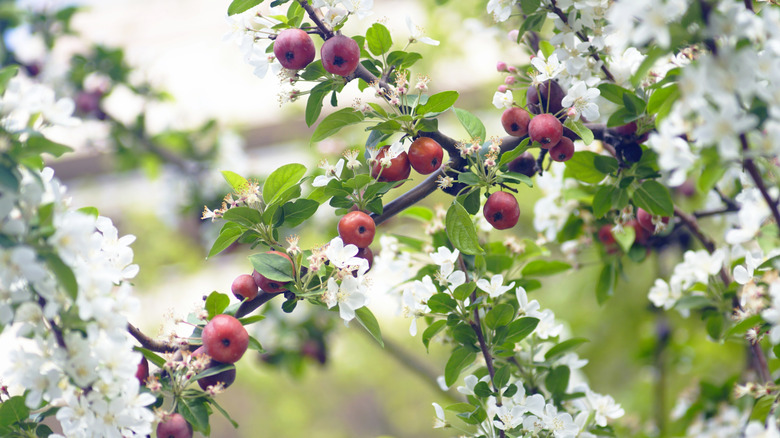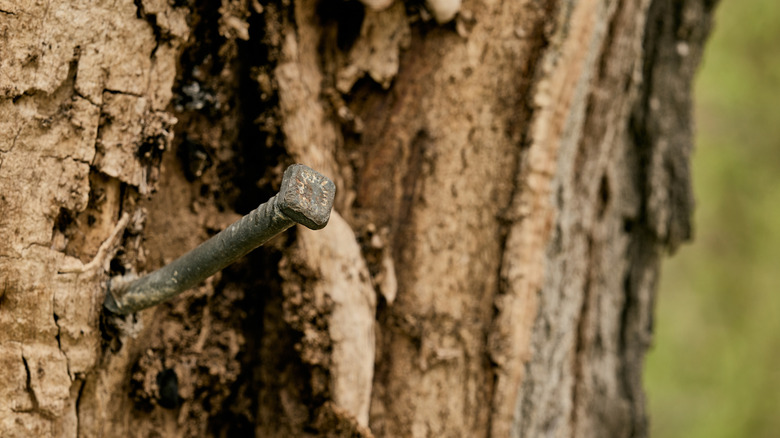Can This Counterintuitive Gardening Practice Help Fruit Trees Thrive?
Most gardeners are no strangers to odd tricks passed down through generations. They've buried rusty nails near plants, talked to them, and even played music to stimulate growth. Many of these rituals fall somewhere between folklore and science, and one of the strangest making rounds today is the practice of "hammering" a fruit tree. Some see it as a charming throwback to folk wisdom, while others worry it could do more harm than good. This leaves us with the central question: Is hammering a nail into a tree an overlooked secret to better harvests, or is it simply another gardening myth with trees dressed up as wisdom? Unfortunately, at the time of writing, there's no scientific evidence to back the hammering method.
With viral hacks spreading faster than fact-checks, it's no surprise that the weird gardening hack of inserting a nail into a tree has found both fans and critics. The idea is that literally driving a nail into the trunk "shocks" the tree into producing more fruit. People online claim it works wonders, bringing once-idle trees to life. However, as you'll see below, the evidence reinforcing the claim is inconclusive at best, boiling down to a pile of anecdotes, mixed results, and plenty of skepticism.
What you need to know about hammering trees for more fruit
The notion is that when you insert a nail into a fruit tree, it supposedly triggers the tree's defense system. The tiny wound signals the tree that its survival is at risk, prompting it to release stress hormones like jasmonic acid and ethylene. These chemical messengers tell the tree to prioritize reproduction over growth, a phenomenon horticulturists call stress induction. In theory, the tree responds by producing more flowers and, potentially, more fruit. Enthusiasts swear by the hack, but no research backs it up, and any apparent benefits may just be a coincidence or selective observation.
Beyond the hormone theory, there lies a more tangible risk. The tree's protective outer layer, the bark, is designed to shield it from pathogens and pests. Penetrating it with a nail opens the door for fungal infections and opportunistic insects. Over time, these intruders can weaken the tree or, in extreme cases, kill it. Advice on this method suggests using stainless steel nails and not hammering young or already stressed trees in your yard. And while a mature, sturdy tree may tolerate a single nail, this hack is far from hazard-free.
Ultimately, hammering a tree sits in a gray zone. While anecdotal accounts may tempt curious gardeners, science offers no guarantee that this method works. Plus, it carries real risks alongside its potential reward. The truth? Your tree might shrug the nail off, but the hack could also backfire entirely.

